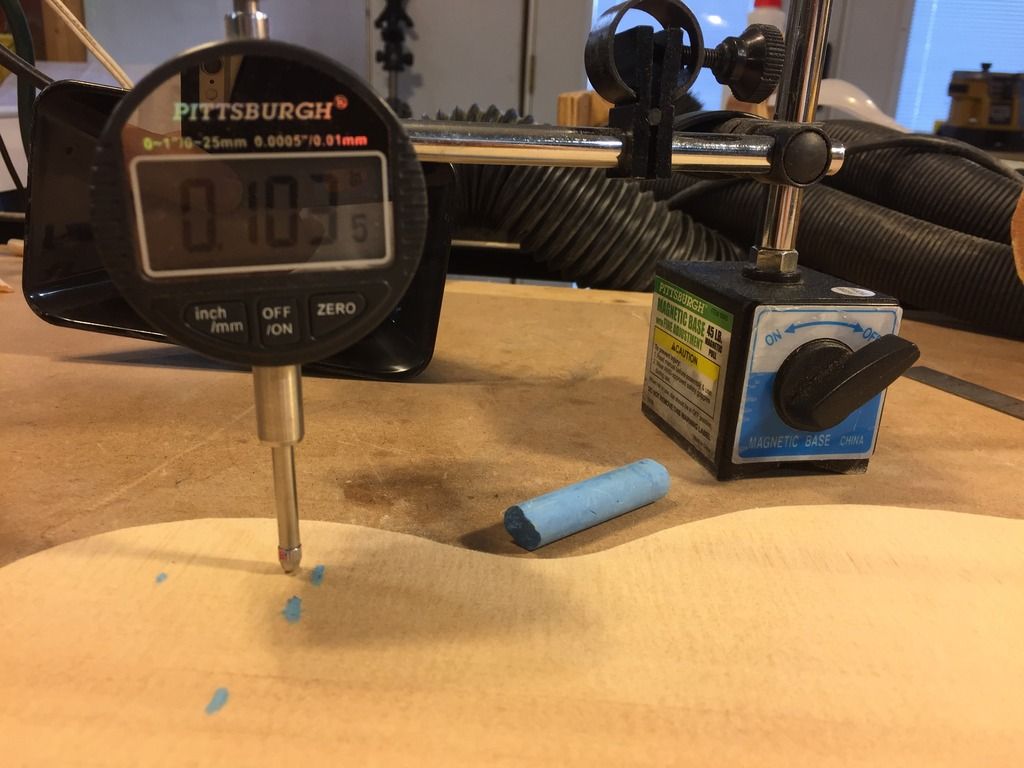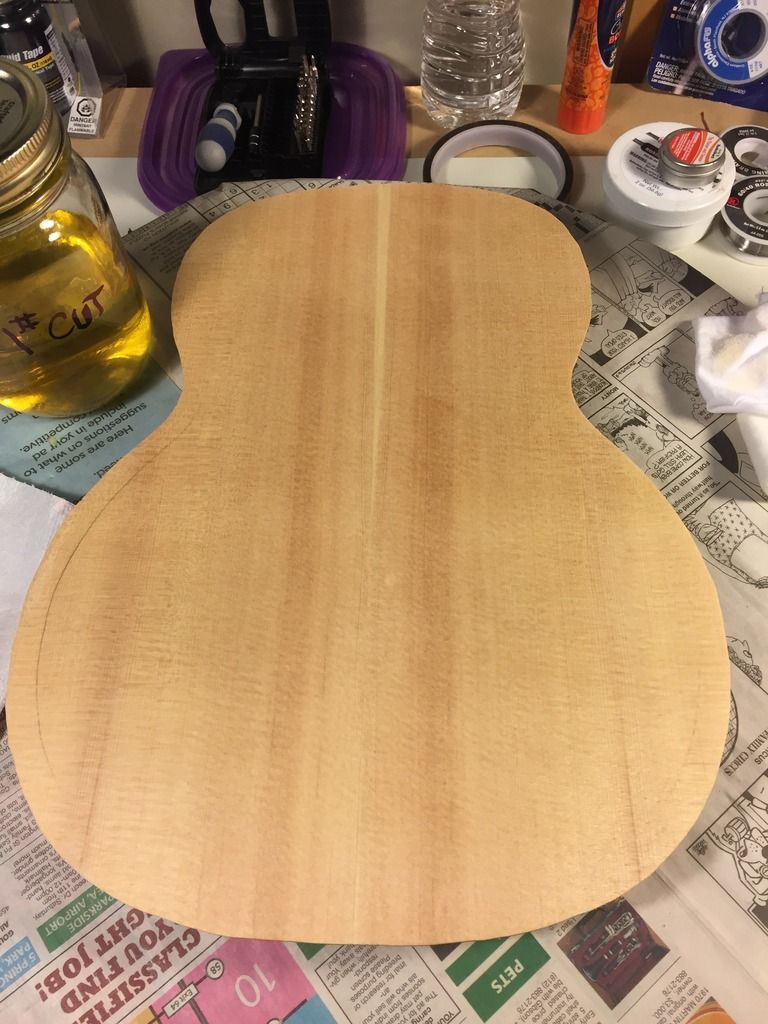Time to buy a new sander I have been using a black and Decker mouse sander for years , but I think this time I will go for a Makita orbital sander , which one works better for you ? What about sanding marks ?
You are using an out of date browser. It may not display this or other websites correctly.
You should upgrade or use an alternative browser.
You should upgrade or use an alternative browser.
Orbital sander Vs. Mouse
- Thread starter banjoprat
- Start date
mikeyb2
Well-known member
I have the Makita 5031 which is light and easy to handle and I can't imagine a better machine for the price. I think most ROS machines would be better than the mouse, unless you want to get in corners.
Timbuck
Well-known member
I own a B&D sander (the type you fasten to a drill) also an orbital palm sander but I never use them on ukes....I mostly use the Jet 10-20 drum thickness sander.. a 6" X 10" belt/disc sander..an oscillating spindle sander..and finish by hand with a cork block.
sequoia
Well-known member
I used to sand out with a block and sandpaper by hand (still do sometimes), but I have found that a ROS is not only quicker, but gives a better finish. Problem is for me, the big ROS sanders are heavy and too aggressive for lutherie work. I keep looking for a small ROS that is smaller (say 4 inches), but nobody ever made one. I think this would be a great niche in the market for a tool maker. Kind of a mini-ROS. The small Black & Decker was a good start, but being B&D it was a piece of cheap ----.
Wildestcat
Well-known member
I have the Makita 5031 which is light and easy to handle and I can't imagine a better machine for the price. I think most ROS machines would be better than the mouse, unless you want to get in corners.
I can also recommend the Makita 5031, used with 150, 240 & 400 grade Mirka Abranet discs and hooked up to a vacuum. There are no sanding marks, however I only use it on guitars - I stick to hand sanding for ukes!
Timbuck
Well-known member
In the raw, I start with 80-grit Mirka to bring the top down from 0.125 to 0.10, then move through the grades until I get to 240 or 320 grit. Monitoring thickness and evenness is done with a surface-plate dial indicator. It allows measurements while keeping the parts taped down. It's untaped when thickness is "close enough," and measured with a handheld dial indicator.I can also recommend the Makita 5031, used with 150, 240 & 400 grade Mirka Abranet discs and hooked up to a vacuum. There are no sanding marks, however I only use it on guitars - I stick to hand sanding for ukes!

After that, the top is then ready for a shellac seal coat and rosette installation.
https://vimeo.com/193456384
ROS's really put a super smooth surface in a short time.

Last edited:
Timbuck
Well-known member
I've noticed that there are some good quality U/Sonic paint thickness gauges around that will measure accurately up to 2mm...I've considered buying one of these all you have to do is find a flat steel or iron surface lay the workpiece on it and take a reading...the only thing that stops me is the price.
The mouse sander and other sheet sanders are mostly orbital, not random orbital (ROS). Orbital sanders typically leave swirls.
"An orbital sander has a square sanding pad, and a random-orbit sander has a round pad.
That one variation makes all the difference. The round pad on a random-orbit sander moves in "random orbits," meaning it vibrates in tiny circles, like an orbital finishing sander, but it also spins in circles. As a result, this single compact tool can be used for both stock removal and ultra-smooth sanding. And because the pad vibrates and spins simultaneously, it all but eliminates swirl that ordinary orbital sanders sometimes leave behind".
http://www.popularmechanics.com/hom...r-power-sanders-and-how-to-use-them-13314160/
"An orbital sander has a square sanding pad, and a random-orbit sander has a round pad.
That one variation makes all the difference. The round pad on a random-orbit sander moves in "random orbits," meaning it vibrates in tiny circles, like an orbital finishing sander, but it also spins in circles. As a result, this single compact tool can be used for both stock removal and ultra-smooth sanding. And because the pad vibrates and spins simultaneously, it all but eliminates swirl that ordinary orbital sanders sometimes leave behind".
http://www.popularmechanics.com/hom...r-power-sanders-and-how-to-use-them-13314160/
resoman
Well-known member
This subject came up some time ago and I was looking for a new ROS at that time. I think it was Chuck Moore that recommended the Festool ETS 125. What a great tool!! Light and small enough and it is set up to be used with one of their shop vacs so that every time you turn on the sander the vac comes on. I have yet to get the sander, pretty spendy, but it is on my list. I think I paid in the neighborhood of $100.00 or so on sale but they have gone up considerably since I bought mine. Well worth the exttra cash, to me anyways. Their sanding discs are good too and the dust holes on the sander and the discs line up where other discs don't.
Great Tool!
Great Tool!
Sven
Well-known member
Ha, I dug up that thread and did exactly what Chuck told us. I ordered my Festool today and then a pad and a load of abranet discs. I have seven ukes with hardening finish and I couldn't imagine hand sanding them, I want to be sane by christmas.
Ha, I dug up that thread and did exactly what Chuck told us. I ordered my Festool today and then a pad and a load of abranet discs.
You should be happy with it, Sven. Festool is supposed to be the Cadillac or Lie-Nicholson quality of tools.
Just put one at $195 (not a discount) in my Amazon shopping cart. Is there a better deal? The Festool website sells them for $195 with free shipping too.
Let me know how it works on finishes; I've only used my Porter Cable on raw wood.
Festool had a special for their new version of that sander for $100 with a $50 gift card toward more festool stuff. It was a preorder deal, with delivery November 1. It went viral, and Festool told their dealers to stop accepting orders. My projected delivery date is now March 16. If you look at the ToolNut site, you can see the deal with the stop order on it.
Nelson
Nelson
Sven
Well-known member
I bought mine on German ebay (new). But there are several models that are strikingly similar, EQ and REQ and loads of suffixes. Right now I can't remember exactly which one I sprung for. But it's a ROS with 2 mm movement, light and compact.
sequoia
Well-known member
Sweet looking tool... Best current deal I found on the Festool ETS 125 was $195. 200 bucks is a lot of money for me, but I'll bet other than the bandsaw, the ROS is the most useful and used tool by far in my shop.... The Achilles heal of ROS sanders in my opinion is the sanding discs. Am I the only one who has a draw full of discs that "might have some life left in them" but I'm too cheap to throw away? I just wish the grit didn't wear so fast. Such is life.
resoman
Well-known member
Am I the only one who has a draw full of discs that "might have some life left in them" but I'm too cheap to throw away? I just wish the grit didn't wear so fast. Such is life.
Nope, LOL I'm right there with ya
I use a Rigid ROS directly after drum sanding. The ROS with 150 removes the long deep scratches from the drum sander in just a few minutes, which takes much longer when I do it by hand. Just don't use an ROS for any fine work, like thinning the veneer on your headstock, 'cause it will sand through it--typically just one edge of it--in nothing flat. I have two vibrating sanders, too, which I haven't touched in years.
I use a Rigid ROS directly after drum sanding. The ROS with 150 removes the long deep scratches from the drum sander in just a few minutes, which takes much longer when I do it by hand. Just don't use an ROS for any fine work, like thinning the veneer on your headstock, 'cause it will sand through it--typically just one edge of it--in nothing flat. I have two vibrating sanders, too, which I haven't touched in years.
Thanks for bringing the issue up, that drum sanders are followed with a ROS for some of the folks here. Also that a ROS is aggressive enough to sand sides and tops too thin; if you don't watch it -- constantly. Just like a hand plane can do. But thickness/thinning can be done by combining a surface indicator reading every couple of passes to help keep the ROS sanded level within 1/32 or 1/64 of an inch. Maybe closer, like 0.0203mm, shown here. Working up past 220, lessens the aggressiveness and helps even surface irregularities out.


Note: the indicator reads zeros if it's not touching, so I used 0.001 for baseline.
Surface irregularities of MDF are rougher than steel or marble surface plates, but possibly ballpark for ukulele tops; I plan on documenting just how much deviation later. I'm told, about equivalent of two sheets of paper.
Last edited:
Similar threads
- Replies
- 7
- Views
- 416
- Replies
- 32
- Views
- 5K
- Replies
- 3
- Views
- 378

